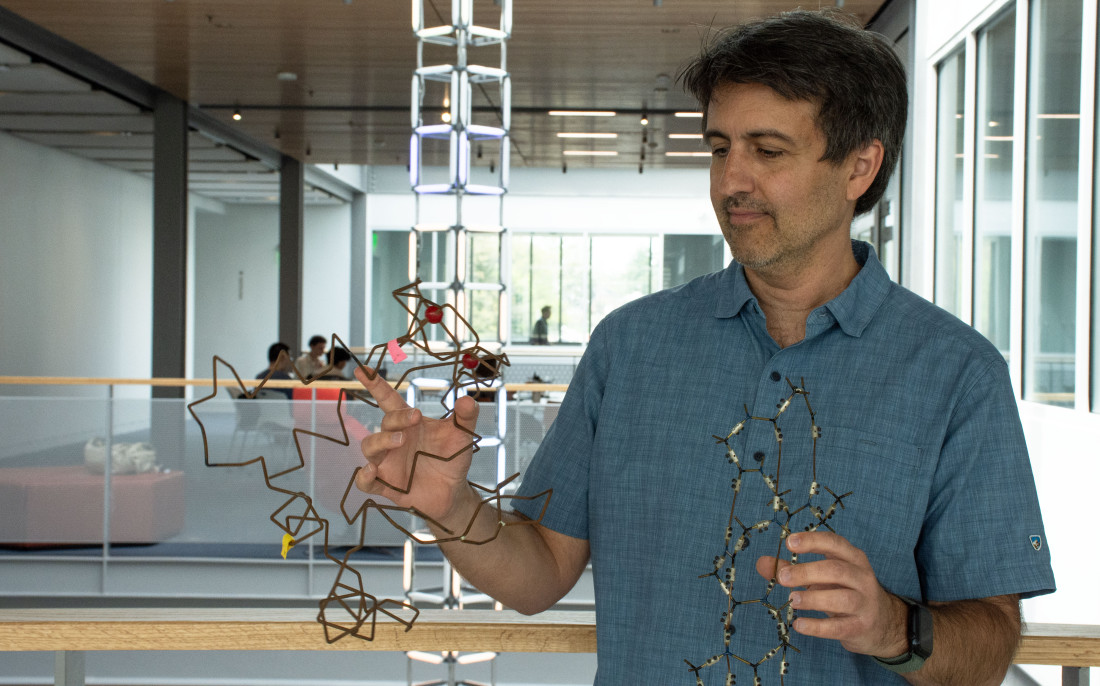UVA Data Points Podcast: Exploring the Protein Universe via AI

In this episode, we explore how data science is revolutionizing our understanding of protein structures, with a special focus on the exciting developments in protein folding and evolution. We’re joined by two experts in the field: Philip Bourne, the founding Stephenson Dean of the UVA School of Data Science, and Cam Mura, a biomolecular data scientist. From new tools like DeepUrfold to the future of biomedical applications, Bourne and Mura provide a unique look into how cutting-edge technology is transforming the world of molecular biology.
BEYOND THE PODCAST
Interested in learning more about the protein model? Additional insights from Cam Mura:
"Parvalbumin is involved in a lot of calcium-sensing, calcium-signaling, and general calcium-related metabolism in humans (as well as other organisms); for example, because of its calcium-binding properties, parvalbumin plays a key role in muscle contraction (fast-twitch muscle), as well as other physiological processes. A core tenet of structural biology is that function follows from 3D structure, and this is why visualizing these 3D structures as chemical and geometric entities is so powerful in letting us really understand and elucidate mountains of biological, physiological, and other biochemical data (including how/why pathways go awry and diseases occur).
The scientist who determined the 3D structures of Parvalbumin—way back in the early 1970s—is Robert ('Bob') Kretsinger, who’s retired from the UVA Department of Biology. This physical model is courtesy of Bob, actually. This is also of historical note, as those early protein structures were determined experimentally, via a painstaking (but beautiful and accurate) approach known as 'protein crystallography.'
Nowadays, AI has revolutionized the determination of these protein structures, such that computers can predict 3D protein structures with high accuracy (this is the craze surrounding 'AlphaFold,' which was actually awarded the Nobel Prize in Chemistry in 2024).
Backing up for a moment, this physical 3D model was handcrafted about 45-50 years ago (the other model, showing all the individual atoms of the molecule in full detail, is of a structural element called an 'alpha helix'—all protein 3D structures are built from 'alpha helices' plus 'beta strands,' i.e., these are the two basic building-blocks of protein structure). Slowly, with advances in computing systems and particularly visualizing and 'molecular graphics,' it became increasingly common to visualize the inordinately complicated 3D molecules (such as proteins, DNA, RNA) on computer displays, where they could be rotated, ‘sliced,’ and otherwise manipulated in the computer screen."

